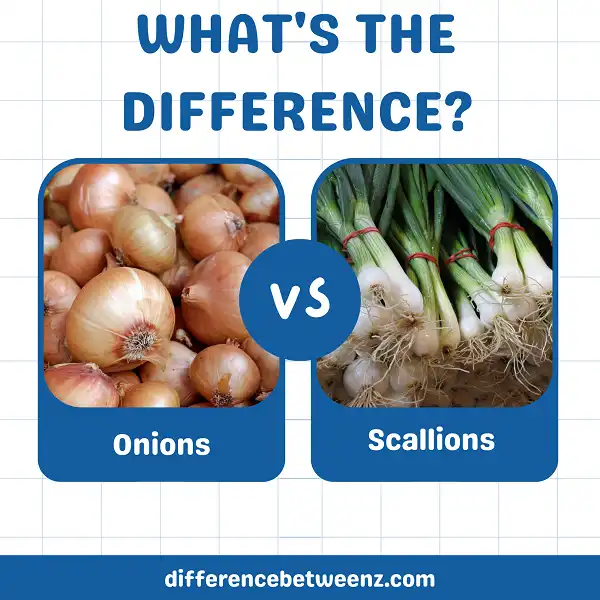Onions are a type of vegetable that is commonly used in cooking. There are different types of onions, including red, yellow, and white onions. Scallions, also known as green onions, are a type of onion that is often used as a flavoring in food. While both onions and scallions have similar flavors and uses in cooking, there are some differences between them. In this blog post, we will discuss the difference between onions and scallions. We will also explore the uses for each vegetable in cooking. Let’s get started!
What are Onions?
Onions are a type of vegetable that is used in many different cuisines around the world. They are typically round or oval in shape and have thin, papery skin. Onions can be white, yellow, or red in color, and have a sharp, pungent flavor. Onions are a member of the Allium family, which also includes garlic, leeks, and chives. They are a popular ingredient in many dishes, such as soups, stews, salads, and sauces. Onions can also be eaten raw or cooked. When cooked, onions become sweeter and more mild in flavor. Onions are a good source of vitamins and minerals, including vitamin C, potassium, and manganese.
What are Scallions?
Scallions are a variety of onion that is characterized by their long, thin shape and their white base.
- Scallions are often used as a garnish or as a flavor enhancer in dishes such as stir-fries and soups. While they are similar to onions, scallions have a milder flavor that is less pungent. Scallions are also known as green onions or spring onions. They are a member of the Allium family, which includes onions, garlic, chives, and leeks. Scallions are native to Central Asia and have been cultivated for thousands of years.
- Today, they are grown in many regions of the world and are a staple in many cuisines. Scallions can be eaten raw or cooked. When cooking with scallions, it is important to remember that the white base is the more pungent part of the onion. The green tops are more delicate in flavor and can be used raw in salads or as a garnish. Scallions can be stored in the refrigerator for up to two weeks.
- To keep them fresh for as long as possible, wrap them in a damp paper towel and place them in a plastic bag. Scallions can also be frozen for up to six months. Scallions are a versatile ingredient that can add flavor and visual appeal to many dishes. With their mild taste and pretty presentation, they are perfect for both everyday cooking and special occasions.
Difference between Onions and Scallions
Onions and scallions are two vegetables that are often used interchangeably in recipes. However, there are actually some key differences between these two ingredients.
- Onions have a thick skin and a large, bulbous shape. They are typically white or yellow in color, and their flesh is fairly firm.
- Scallions, on the other hand, have thinner skin and a more slender shape. They are usually green in color, with only a small white bulb at the base.
- When it comes to flavor, onions are much stronger than scallions. As such, they are best used in cooked dishes where their pungent flavor can be mellowed out by heat.
- Scallions, on the other hand, have a milder flavor that is well-suited to raw or lightly cooked dishes.
So, the next time you’re planning a meal, be sure to choose the right ingredient for the job.
Conclusion
Onion or scallion, what’s the difference? The answer may surprise you. Both onions and scallions are in the Allium family but they differ in a few ways. Scallions have a milder flavor than onions and are much thinner. They are typically eaten raw in salads or as a garnish. Onions have a stronger taste and come in different colors such as white, yellow, red, and purple. They can be eaten raw or cooked. There is really no wrong way to enjoy these vegetables, just depends on your preference. So next time you’re at the grocery store, be sure to pick up some of each so you can experiment with them in your favorite recipes!


